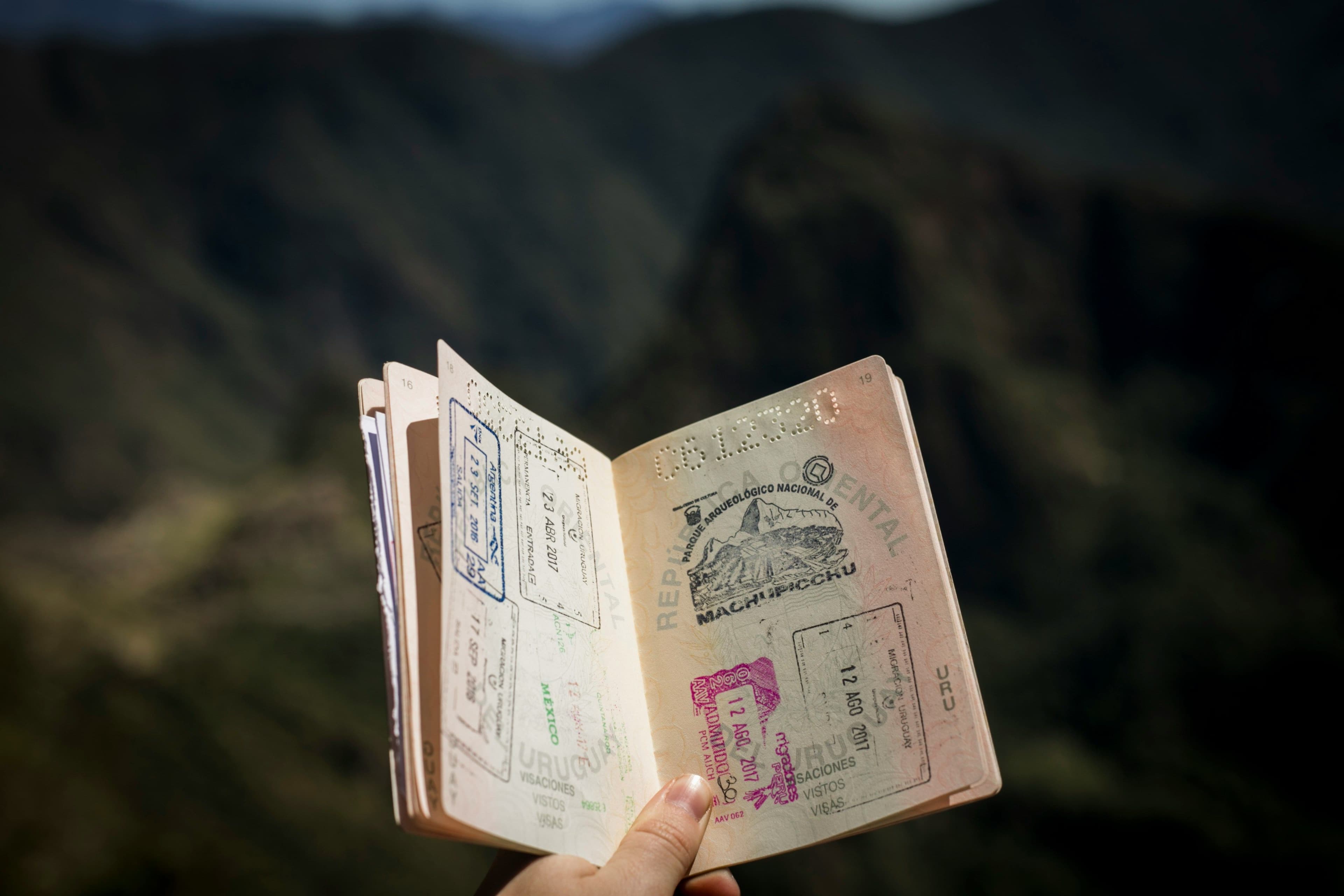Europe’s Big Border Upgrade
By Sandra Romano
Oct 10, 2025

What the New EES Means for Travel
If you’re planning a European trip in the coming months, you may notice something different at border control, especially if you’re not an EU/Schengen citizen. The European Union is rolling out a new biometric border-management system called the Entry/Exit System (EES). For tourists and short-term visitors, this change has direct implications: from how your passport is processed, to what you need to know about ETIAS (the new travel authorization), to how delays might affect your journey.
In this article we’ll walk through:
What the EES is (and isn’t)
Why it is being introduced
When and how it will be rolled out
How it will affect tourists and short stay visitors
How EES intersects with ETIAS, and how that is different from ETA
Practical advice for holiday makers
A look ahead: what to expect in 2026 and beyond
Summary and final thoughts
Or scroll to the bottom for EES in a nutshell.
1. What Is the EES?
The Entry/Exit System (EES) is an automated information system designed to record and monitor the border crossings of non-EU nationals when they enter and exit the external borders of the Schengen Area.
Key features include:
Biometric data collection: At the first entry, travellers will have fingerprints (two index fingers) scanned and a facial image taken (photo) to be stored.
Digital registration of travel: The system will store the date, time, and place of entry and exit at external Schengen borders.
Replacement of passport stamps: Once fully in force, passport stamping for entry/exit will largely be phased out.
Monitoring of stay limits: Because the system records entry and exit times, it can more precisely enforce the “90 days in any 180 days” rule for short stays.
Data retention and sharing: The collected data (biometric + travel) will be retained for a specific period (up to five years in many cases) and made available to relevant authorities.
In short: EES is a border control mechanism, not a visa or travel permit in itself.
What EES is not
It is not an authorization to enter the EU, it works in conjunction with whatever visa or exemption system applies.
It is not ETIAS (more on that below).
It does not apply to EU, EEA, or Swiss nationals (or those with long-term residence permits) when crossing internal Schengen borders.
It does not replace all manual or alternative procedures immediately, there will be a transitional period.
2. Why Introduce EES?
The EU cites several motivations for bringing in EES:
Enhanced security: Biometric checks help reduce identity fraud, impersonation, and misuse of travel documents.
Better tracking of overstays: A fully digital record helps detect those who remain beyond authorized periods.
Efficiency and modernization: Moving away from manual passport stamps to automated checks is part of a broader “smart borders” strategy.
Data for policy & enforcement: Availability of improved entry/exit data helps border management agencies do their work more effectively.
In essence, EES is part of a push to modernize Europe’s external border infrastructure, using digital tools to make crossings more robust.

3. When & How EES Will Be Rolled Out
Timeline
The official start date for EES is 12 October 2025, when the system begins a phased introduction.
The full implementation deadline is 10 April 2026, by which time all external Schengen border crossings should be operating under EES.
The EU’s revised timeline places the introduction of ETIAS (the companion travel authorization) in the last quarter of 2026, after EES is fully in place.
However, some sources note that ETIAS’ start may be delayed further depending on readiness.
Phased Rollout & Transitional Rules
The rollout will be gradual rather than “switching on everywhere at once.” Some border points will adopt EES earlier, others later. During the transitional period:
Traditional passport stamps may still be used in certain cases or backup routes.
Not all travellers will immediately be subject to biometric registration, the requirement will phase in.
Border agencies will need to upgrade their infrastructure (kiosks, cameras, biometric scanners) to support EES.
Because of these transitional arrangements, the impact on travellers in late 2025 to early 2026 may vary across countries, border types, and modes (air, sea, land).
4. How EES Affects Tourists & Short-Stay Visitors
If you are a tourist (or visitor staying short term) to Europe and not an EU/Schengen citizen, here’s what to expect:
Biometric registration at first entry
If this is your first time entering the Schengen (or EU external border) after EES is in force:
You’ll be asked to scan your passport at an automated kiosk or a border counter.
A digital photo (facial image) will be taken.
Fingerprints (two index fingers) will also be captured, except in the case of children under 12 (who are typically exempt).
You may have to answer a few standard questions (e.g. about your trip, accommodation, return flight).
Once the system verifies your data, you may proceed (often via a “fast gate” or automatic gate).
If everything matches expectations (no alerts, no data mismatches), this process should be quick, though in early days of rollout, some delays are expected, especially when equipment is new or border traffic is high.
Subsequent entries & exits
On future entries/exits (within the same passport), border officers or automated gates will match your biometric data from the system rather than requiring full re-registration.
Your entry and exit times will be automatically recorded in the database, no more manual stamps in many cases.
This helps enforce the 90-in-180 rule (for visa-exempt travellers) more accurately.
Stay limit enforcement
Because EES tracks your exact entry and exit dates, overstays (exceeding permitted time) will be more easily detected. Travelers may face fines, bans, or refusals if their stay limit is exceeded.
Potential delays & preparatory considerations
In the early phases of the rollout, queues and delays are anticipated, border posts may take longer to process first-time registrations.
In some border crossings (especially busy land crossings, ferry terminals, train terminals), the airport-style infrastructure may take longer to implement.
Travelers are advised to allow extra time for border processing when arriving or departing, especially in peak seasons.
At border areas with juxtaposed controls (for example, Dover/Eurostar / Folkestone for UK–France), EES registration may be triggered before departure rather than on arrival in Europe.
Who is affected, and who is exempt
Non-EU / non-Schengen citizens who are visa-exempt or who hold short-stay visas, when entering a Schengen country.
EU, EEA, Swiss citizens are not subject to EES procedures for internal crossings.
Some travellers with long-term residence permits, or who hold certain visas, may have exemptions (depending on national rules).
In effect, most tourists from “visa-free” countries will need to participate in EES from their first arrival after implementation.
5. ETIAS and ETA: What They Are + How They Differ from EES
To make sense of Europe’s changing border regime, it helps to compare the three systems you might hear about: EES, ETIAS, and ETA (or eTA). Because these terms are often used loosely in travel media, it can be confusing, so let’s clarify.
What is ETIAS?
ETIAS stands for European Travel Information and Authorization System. It is a planned electronic travel authorization required before entering the Schengen/ETIAS zone for travellers from visa-exempt countries.
Key points:
It is not a visa, but a travel authorization (like the U.S. ESTA).
Travelers from countries that currently enjoy Schengen visa-free entry (approx. 60 or so countries) will need to apply for ETIAS before their journey.
The application is online, requires personal information and answers to security/eligibility questions.
The authorization is expected to be valid for three years or until the passport expires (whichever is earlier).
Age-based fee: Applicants aged between 18 and 70 will pay a fee (recently updated to €20).
For children (below 18) or seniors over 70, the fee is typically waived.
The ETIAS is planned to launch sometime in late 2026, after EES is fully in place.
During the initial period there will be a transition phase and grace period to allow people to adjust.
In effect, ETIAS is a pre-screening measure: authorities will check applicant details against security, migration, criminal, and other databases before granting permission (in principle) to attempt travel to Europe.
What is ETA (or eTA)?
The term ETA (or eTA) stands for Electronic Travel Authorization, used in some countries (for example Canada, Australia) to allow visa-free travellers to pre-register with immigration authorities. It is not a European system itself, but a point of reference.
For example, Canada’s eTA is required for visa-exempt nationals traveling by air to Canada.
Australia’s ETA is a version of electronic clearance for tourists/business visitors.
In discussion of ETIAS, some media refer to "Europe’s ETA" simply as a shorthand, comparing ETIAS to the ETA concept. But Europe’s real system is ETIAS, not “ETA.”
Thus, when you see “ETA” in relation to Europe, it’s often a misnomer or shorthand, the correct term is ETIAS.
So for a tourist from a visa-exempt country, you might:
Apply for and receive ETIAS before you travel
Arrive in Europe
At your first border crossing subject to EES, submit your biometric data
On subsequent border crossings use biometric matching via EES system
The two systems work in tandem: ETIAS handles pre-screening; EES handles entry/exit enforcement.

6. Practical Tips for Tourists
Given these changes, here’s what you should do (or keep in mind) when planning a European trip:
Before you go
Check your eligibility: Are you from a visa-exempt country? If so, you will eventually need ETIAS (post-2026).
Apply early: When ETIAS opens, apply well ahead of your travel (at least a few days, ideally weeks) to avoid issues if your authorization needs extra review.
Passport validity: Ensure your passport is valid for at least the duration of your trip (and beyond if required).
Keep documentation handy: Flight tickets, accommodation bookings, travel insurance, border agents may ask.
Plan for buffer time: At border crossings (especially in early rollout phase), allow extra time to pass through customs/immigration.
Avoid scams: Use official EU/Schengen websites (e.g. travel-europe.europa.eu) for ETIAS applications, and avoid third-party sites charging exorbitant fees.
At the border
At your first entry (post EES implementation), be prepared to stop at the biometric kiosk, scan your passport, have your photo and fingerprints taken, and answer basic questions.
After this, future entries or exits should be smoother via biometric matching.
Don’t rely on getting a passport stamp: while stamps may be used in fallback cases or early on, they won’t be the main proof of legality. Always trust the system records.
If border control staff detect a problem (overstay, mismatch, red flag), you may be delayed, interrogated, or refused entry.
While traveling within Schengen
Once inside the Schengen zone, internal borders are generally open (no checks), as before. EES is about external border crossings.
However, carry your travel documents, ETIAS authorization (once mandatory), and any proof of onward travel or finances in case asked.
Be mindful of your “90 days in 180” rule if your travel is long or involves multiple border crossings in and out of the Schengen area.
On exit / departure
Exiting a Schengen country will also be recorded via EES. Even if outward stamping is no longer physically done, the system logs your exit time.
If you overstay, systems may flag you for future travel restrictions or fines.
7. Looking Ahead: What 2026 and Beyond Might Bring
To wrap up, here’s a glance at how things may evolve:
Full EES operation by April 2026: After this date, nearly all non-EU border crossings will be managed via EES systems.
ETIAS becomes mandatory: By late 2026 (or possibly later), ETIAS will be required for entry by visa-exempt nationals.
Grace / transitional periods: There will be a transition period and grace period where ETIAS is accepted but not yet strictly enforced, and for some initial entries even without ETIAS in place.
Greater integration and automation: Over time, more border points (airports, sea ports, train crossings) will adopt automated gates, biometric matching, and minimal manual checks.
Data use and security: The databases will be increasingly used for security, migration control, and law enforcement, while being governed by strict privacy rules (e.g. GDPR).
Potential issues & adjustments: Early on, technical glitches, staffing shortages, infrastructure gaps, or border congestion are possible. Border authorities will likely tweak procedures, capacity, and staffing over time.
8. Summary & Final Thoughts
For tourists and short-term visitors to Europe who are not from EU/Schengen countries, the coming years will bring significant changes in how border control is handled:
EES (Entry/Exit System) is a biometric registration and tracking tool to replace manual passport stamps and to more accurately enforce stays.
ETIAS is a new pre-travel authorization (like an electronic visa waiver) that visa-exempt nationals will need starting in late 2026.
ETA is really a general term (used in other countries) but often conflated with ETIAS; in Europe, ETIAS is the correct term.
As a traveller, you’ll want to stay informed, plan ahead, allow extra time at borders, and ensure your documentation and applications are in order.
For your next European trip: keep an eye on when ETIAS becomes mandatory for your nationality, plan your cross-border timing accordingly, and prepare for biometric procedures at your first entry once EES is live. These changes may seem complex at first glance, but once the systems settle in, they should offer smoother, more secure travel, provided you’re ready for them.
EES in a Nutshell
Applies to non-EU/Schengen travellers.
Begins 12th October 2025.
At first entry after launch, you’ll:
Scan your passport at an EES kiosk
Have your photo + fingerprints taken
Future trips: EES recognises you automatically.
Replaces passport stamps for most visitors.
Enforces 90-days-in-180-days stay limit.